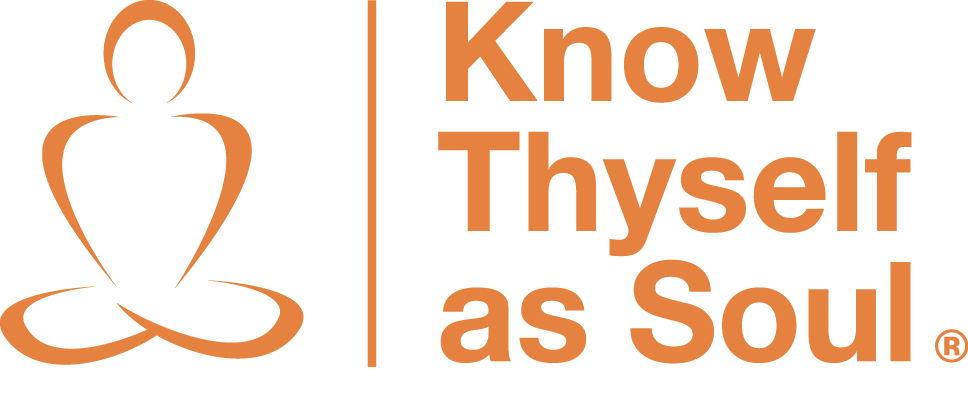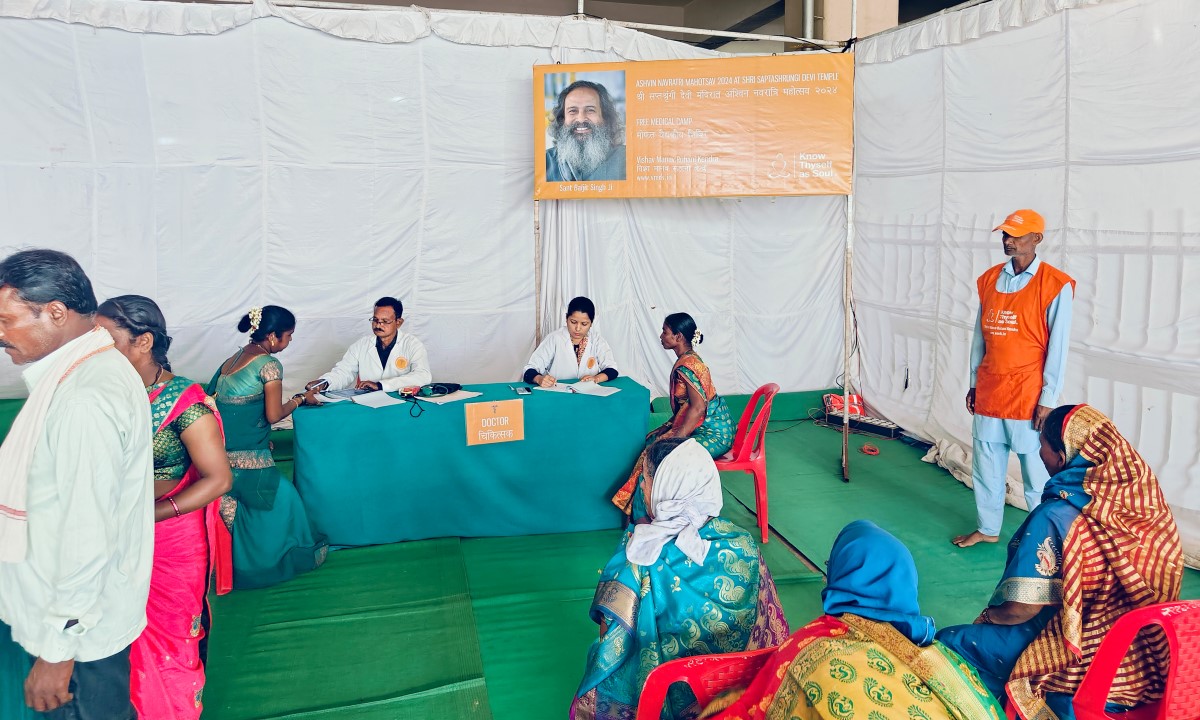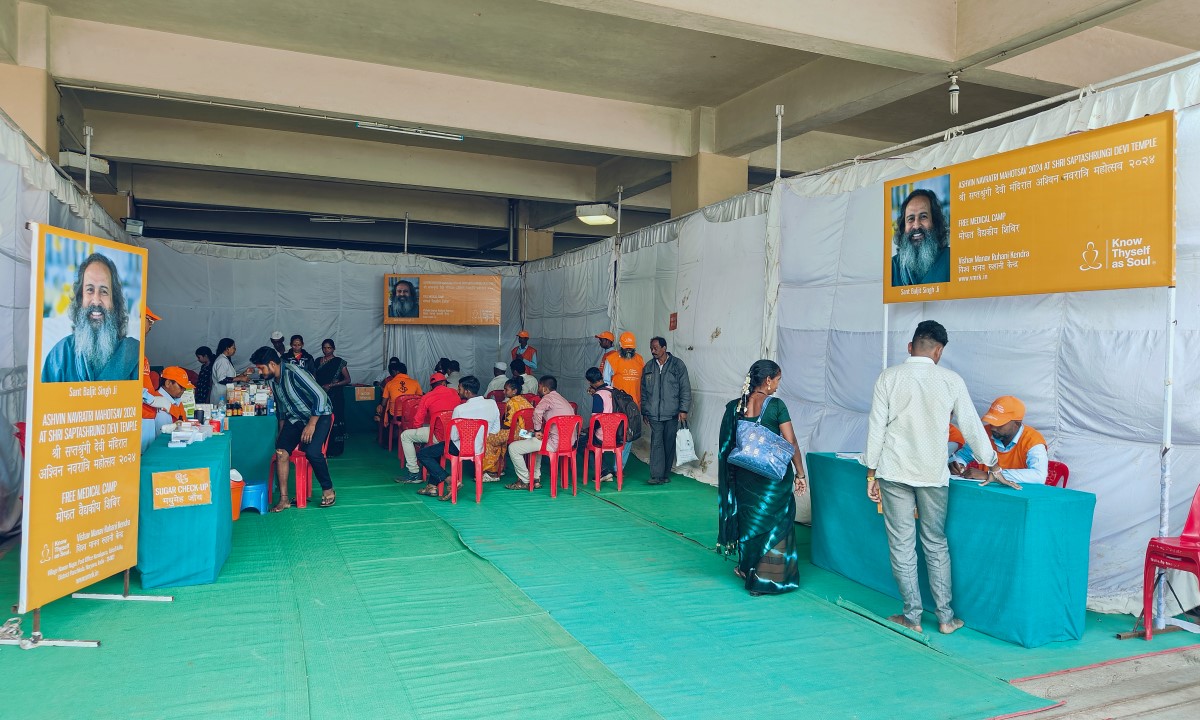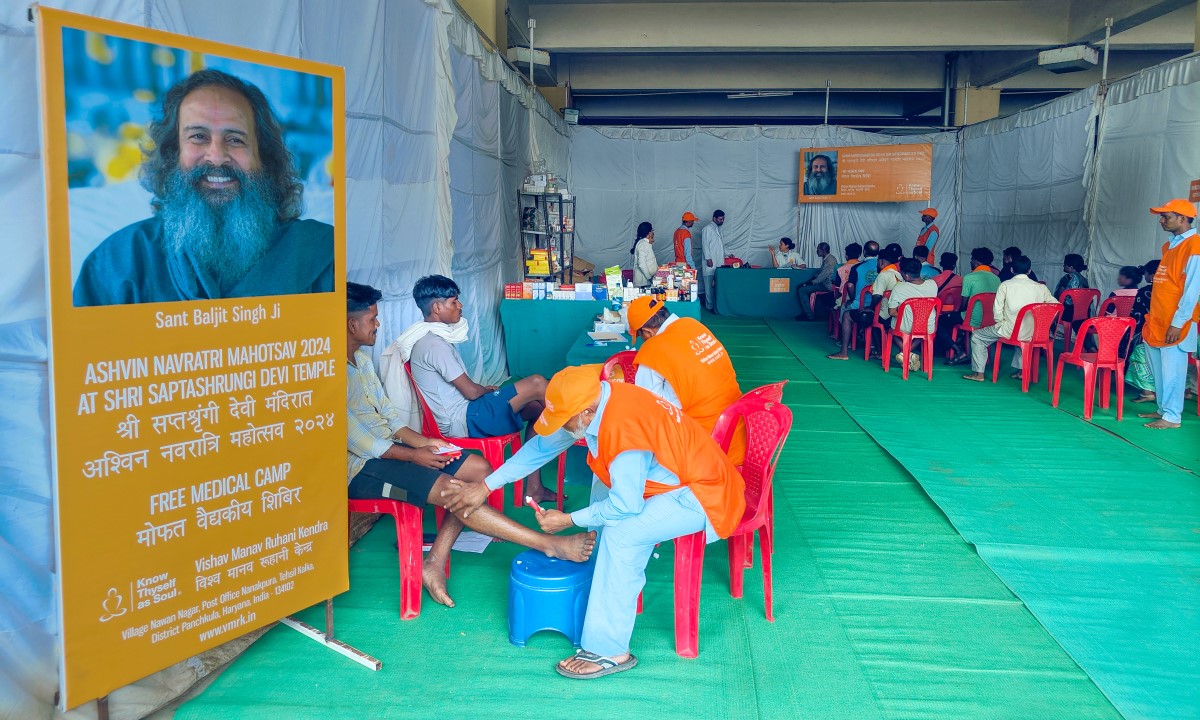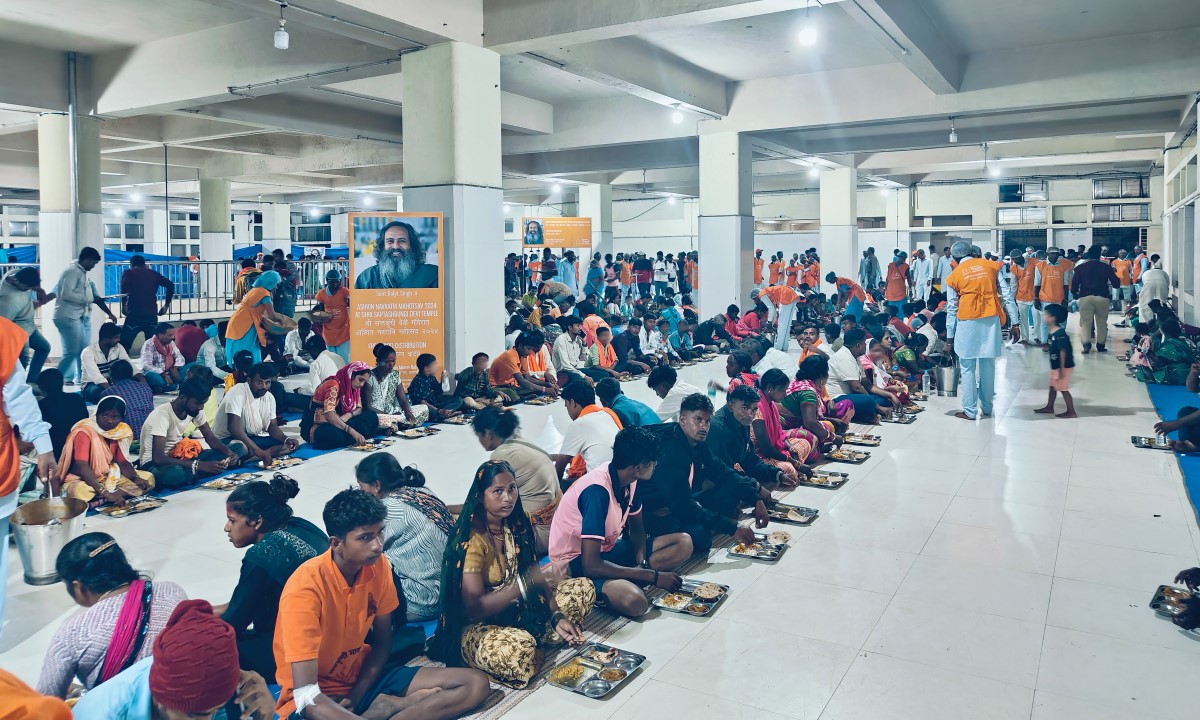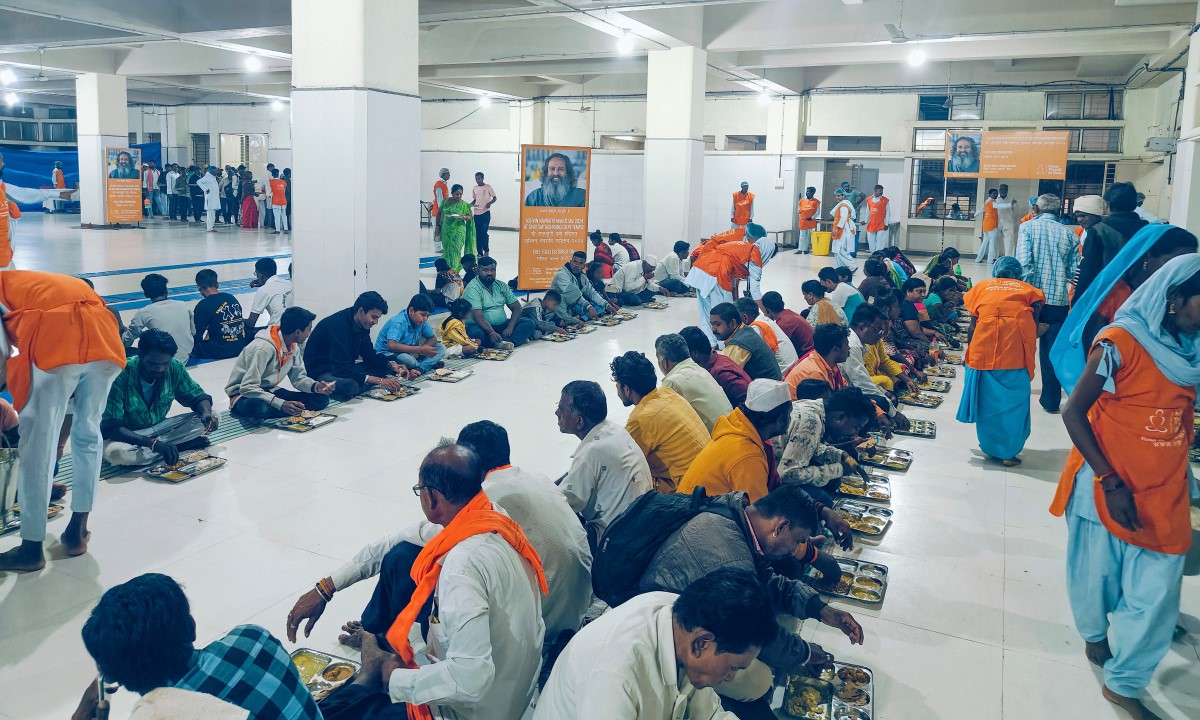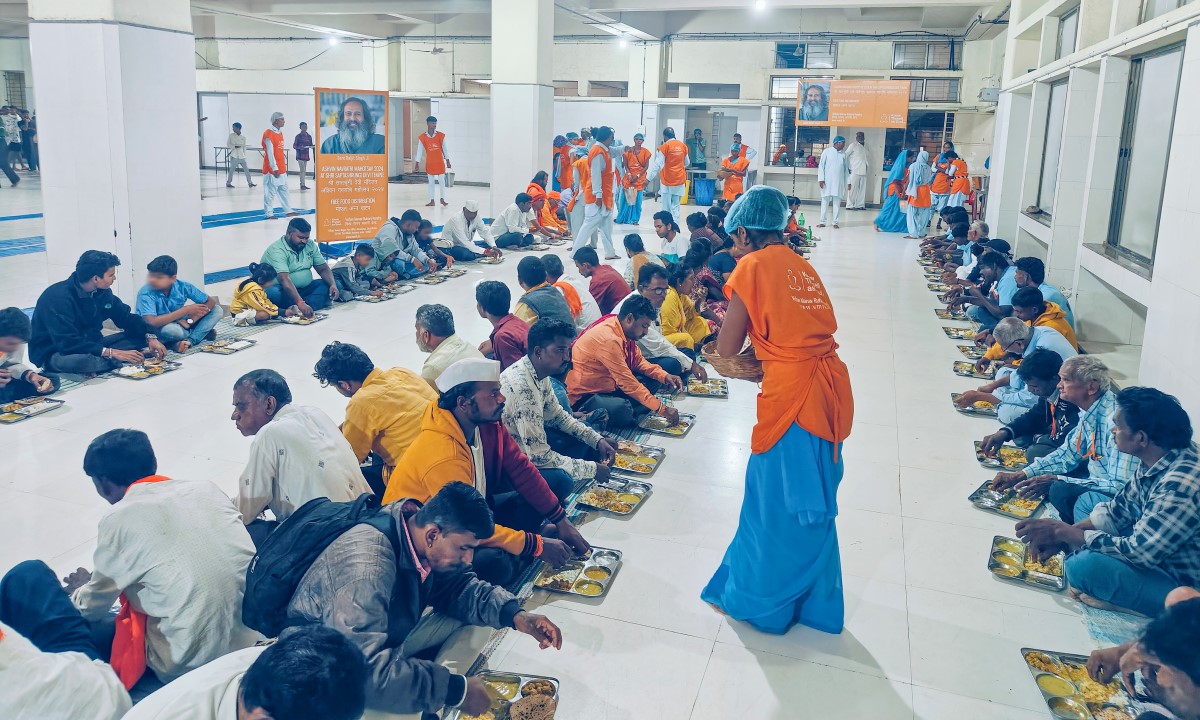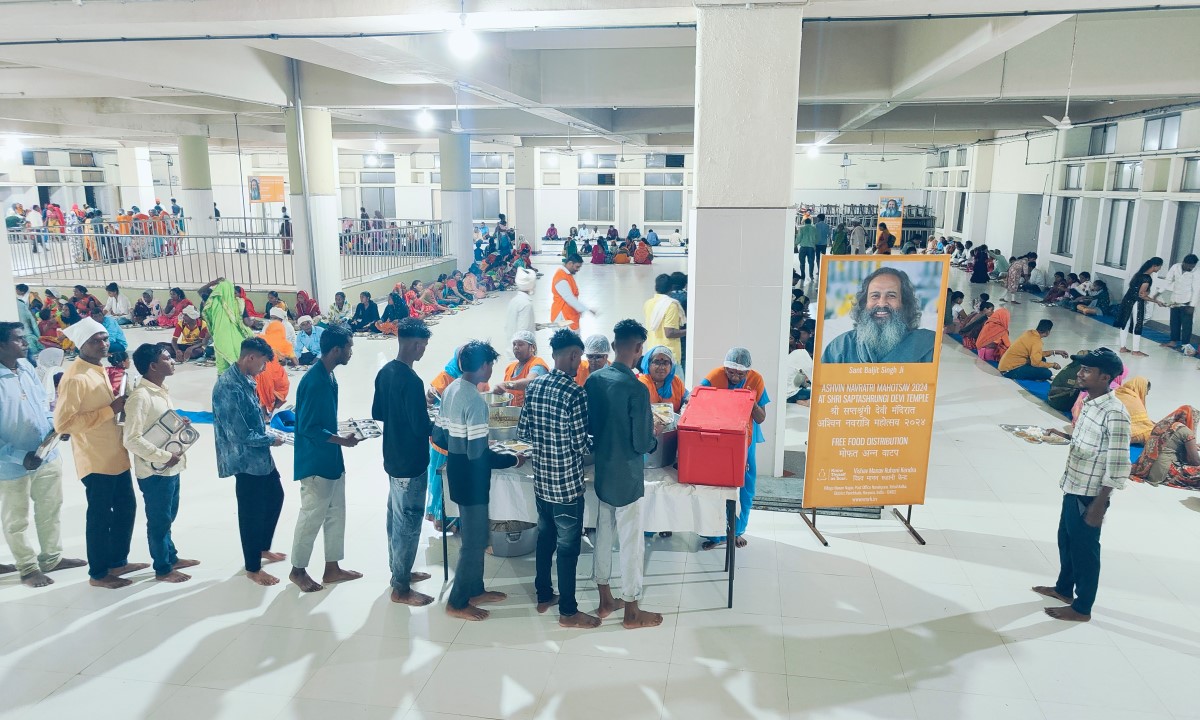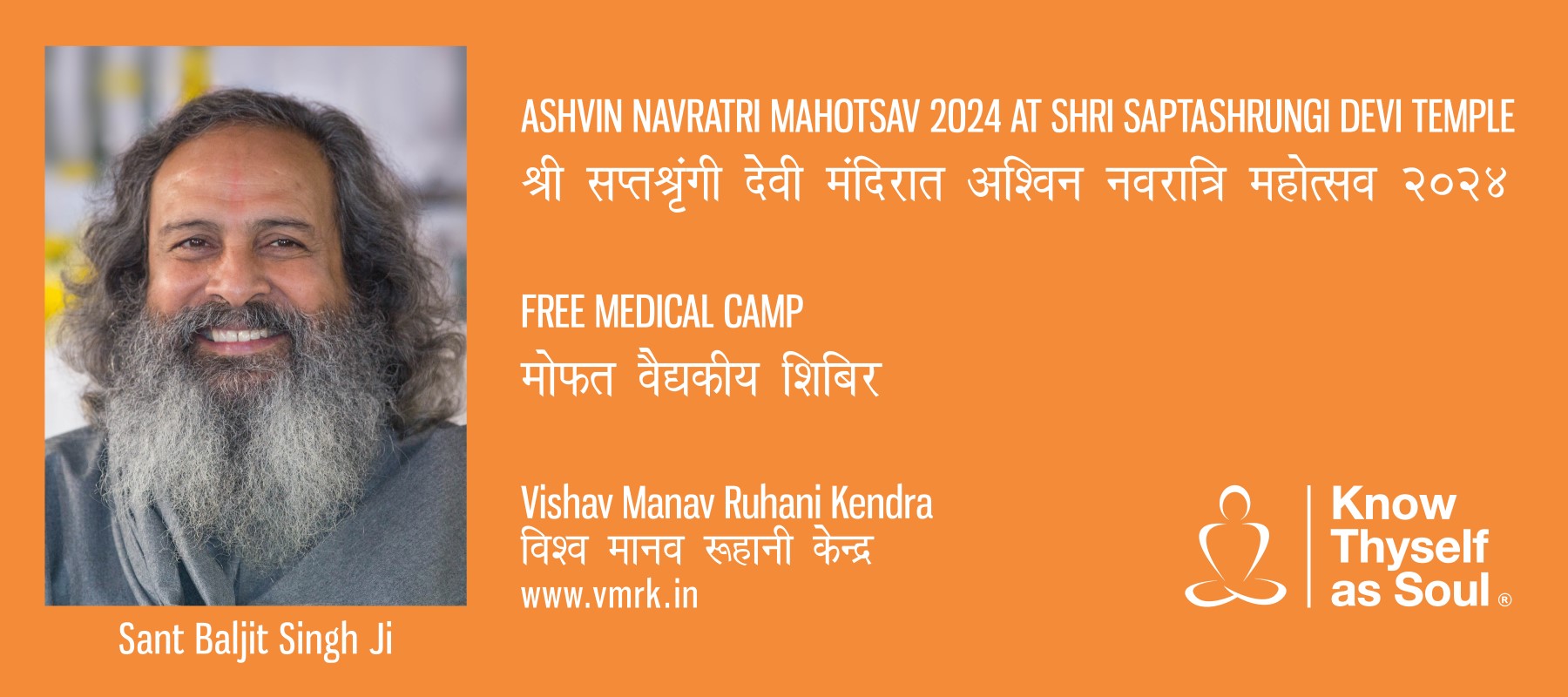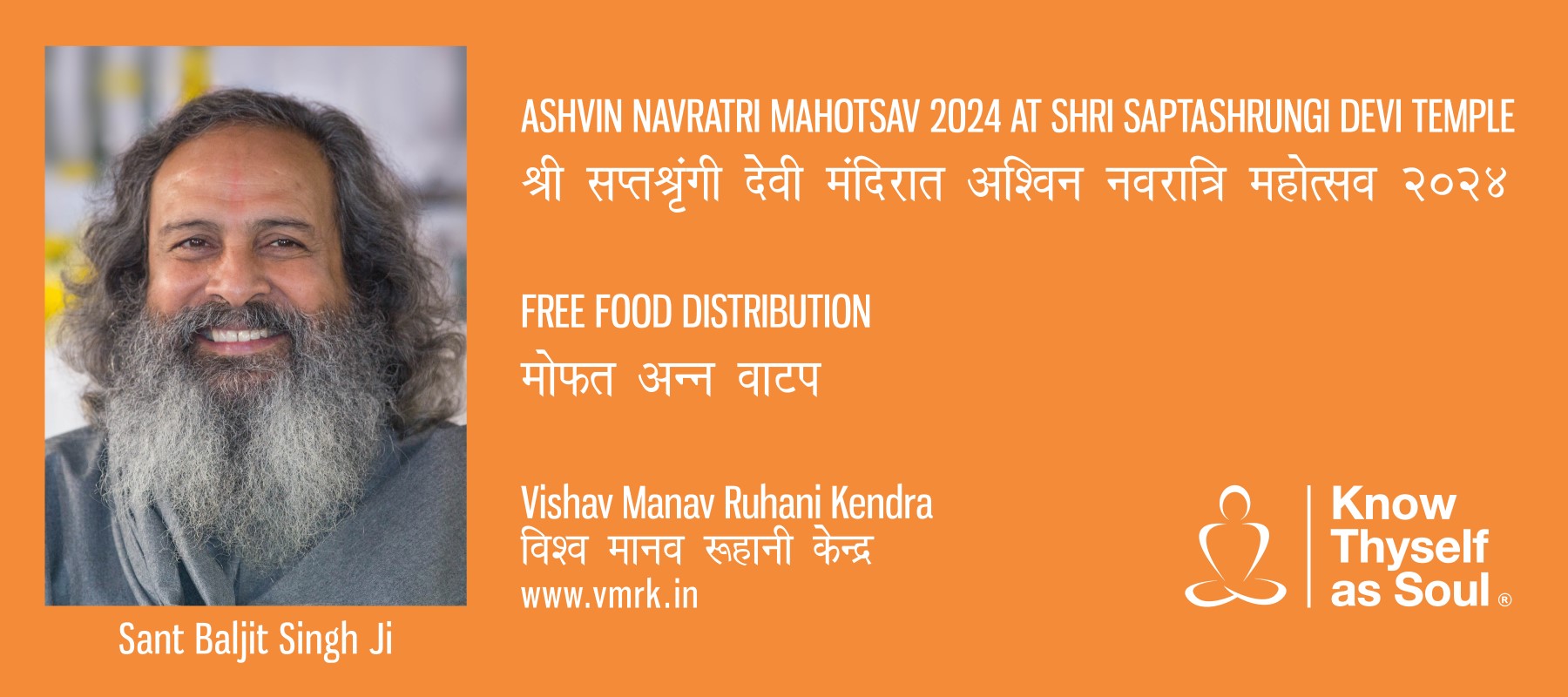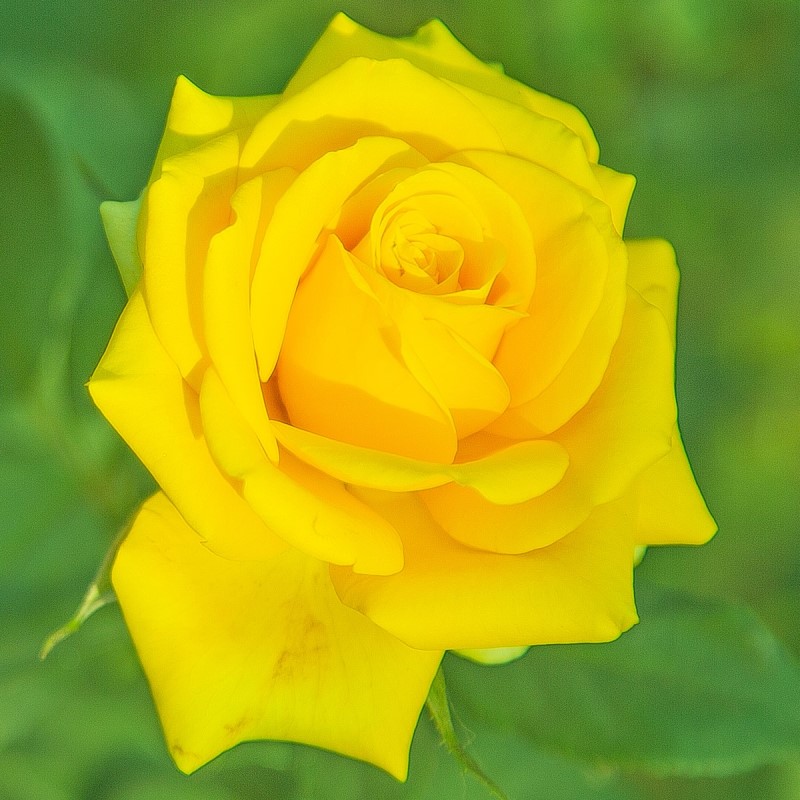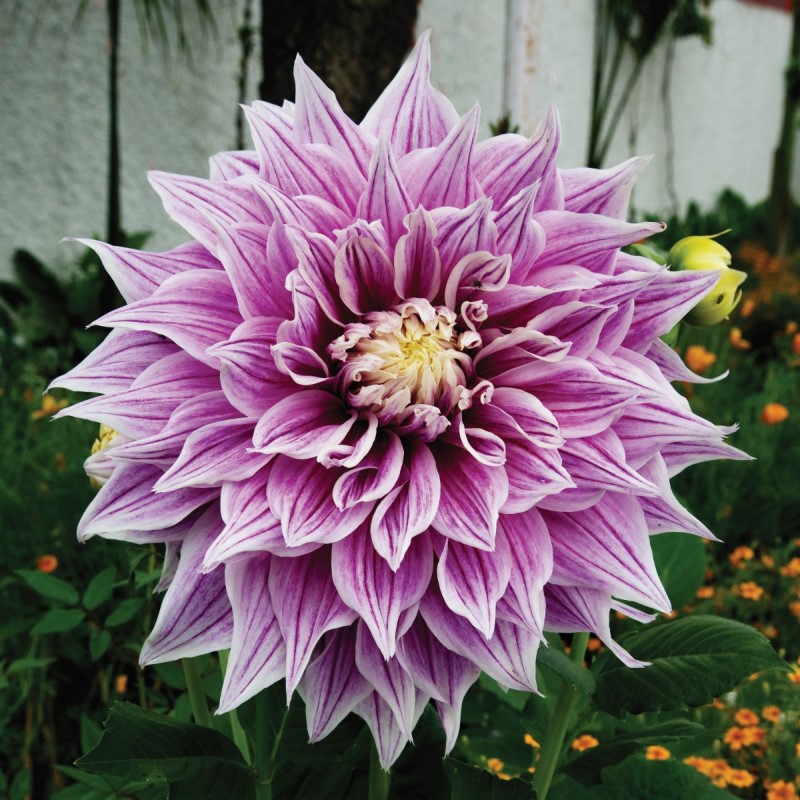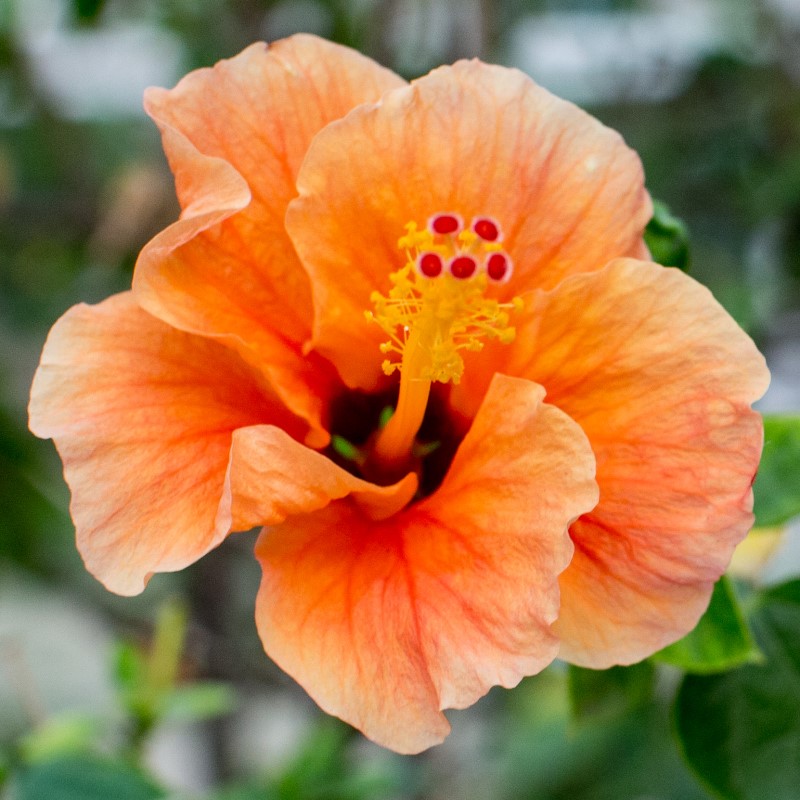2024 Ashvin Navratri Utsav at Shree Saptashrungi Nivasini Devi Temple
Each year, the nine-day autumn Navratri festival is celebrated during the Ashvin month (September–October of the Gregorian calendar) with great fervor at the Shree Saptashrungi Nivasini Devi Temple. Pilgrims arrive in large numbers, traveling by various modes of transportation to reach the base of the hill. From there, they either climb 510 steps or take funicular trains to the temple at the hilltop. Some even undertake a barefoot pilgrimage from their homes. Notably, the temple experiences the highest influx of devotees beginning on the seventh day, or Saptami, of Navratri. This day holds great significance because it represents the worship of Goddess Kalratri, the form of Goddess Durga that symbolizes victory of good over evil.
The influx of devotees continues after Navratri, lasting until Kojagiri Purnima which falls on the full moon in the Ashvin month. Many devotees fill containers with water from rivers around their native places. They then walk to the temple, carrying the containers attached to long poles called kanwar. The kanwarias begin arriving several days prior and on the night of Kojagiri Purnima, they offer the water to the goddess.
In April 2024, Vishav Manav Ruhani Kendra (VMRK) provided free medical and food services to pilgrims during the Chaitra Navratri Utsav at Shree Saptashrungi Nivasini Devi Temple. Satisfied with the services provided, the local administration approached VMRK to provide these services again during the Ashvin Navratri and Kojagiri Purnima celebrations that collectively attract hundreds of thousands of devotees to the temple.
VMRK gratefully accepted the opportunity and coordinated with the local administration to schedule and organize the services. This year, Ashvin Navratri was observed from October 3–11, followed by Kojagiri Purnima on October 16. The local administration requested VMRK to offer medical services from October 7–17 and provide food services from October 10–17.
Preparing to serve the pilgrims
The local administration provided a waterproof tent for medical services and a roofed hall for food services at different locations. VMRK customized the planning for each service, situated approximately 1.5 kilometers and 1 kilometer respectively from the temple.
A team of volunteers from nearby areas came to the VMRK center in Pimpalner to organize and pack the materials. They also thoroughly cleaned the ambulance for emergency medical services. On October 5, all the materials including 35 boxes of medicines and medical equipment were loaded onto a truck and the ambulance. At around 8 pm, these vehicles along with a team of 20 volunteers left the Pimpalner center. Simultaneously, other volunteers traveled directly to the medical camp location from their homes.
Meanwhile, another team of volunteers at the center continued with the remaining preparations for the food services. Utensils, food ingredients, and other materials were packed and loaded onto the truck which left the Pimpalner center on the early morning of October 9.
24-hour medical services
After traversing a stretch of hilly terrain with steep zig-zag paths, the first batch of VMRK volunteers arrived at the site for the medical camp on October 6. Due to frequent rain that day, the site was very muddy. To address this, VMRK volunteers first spread dry sand to absorb moisture. They also cleared the ground of rocks and filled small pits before setting up the medical camp.
On the morning of October 7, VMRK’s medical camp, covering an area of 60 by 30 feet, became operational. The medical camp was staffed by 3 doctors, 3 pharmacists, and 1 paramedical staff, who provided round-the-clock medical services. A group of 15 volunteers assisted the medical team at the camp. An ambulance was also stationed on-site in case of emergency.
Close to midnight on October 10, heavy rain and gusty winds drenched the medical camp and temporarily disrupted the medical services. Volunteers promptly packed up the medical camp which was later shifted to another site provided by the administration. Medical services resumed on the morning of October 12.
As many pilgrims undertake a barefoot pilgrimage to the temple, a significant number of patients visited the camp with foot pain, body aches, and foot blisters. The medical staff carefully nursed their wounds and offered them pain relievers. Foot massage service was also offered to bring relief to the pilgrim’s tired feet. Additionally, pilgrims also had to cope much cooler temperatures in the hilly terrain, as well as frequent exposure to rain. As a result of the weather conditions, many pilgrims experienced symptoms such as cold, cough, and fever.
MEDICAL CARE FROM 3 DOCTORS, 3 PHARMACISTS, 1 PARAMEDICAL STAFF, AND 15 VOLUNTEERS
PILGRIMS RECEIVED FREE MEDICAL CONSULTATION, MEDICINES, AND FIRST AID
Food services
Upon arrival from Pimpalner, VMRK volunteers began preparing for the food service operations. On October 10, VMRK commenced its food services in the hall that measured 127 feet by 126 feet. VMRK’s team of more than 140 volunteers worked to provide food services to the massive crowd of pilgrims visiting the temple during the celebration. These volunteers were organized into groups, each entrusted with specific responsibilities: preparing food, serving food, washing utensils, routinely cleaning the food service hall, and managing the queue of the devotees waiting to be served food.
Each day, the volunteers prepared wholesome vegetarian meals. Chapati, seasonal vegetables, rice, and pulses were served hot and fresh. To ensure that the chapatis remained warm, large insulated food containers were used.
At the food distribution area, pilgrims were guided to queue up to receive their meals. Then volunteers guided the pilgrims to the seating area, where mats were arranged in rows. VMRK volunteers moved through the seating areas to offer additional servings as required.
VOLUNTEERS WORKED IN SHIFTS TO COOK AND SERVE WHOLESOME MEALS EVERY DAY
VEGETARIAN MEALS WERE SERVED AROUND THE CLOCK TO DEVOTEES
Visitor feedback
Many people left comments in our visitor log, some are listed below:
I came here for darshan. While here, I experienced severe eye pain. Therefore, I went to VMRK’s medical camp for treatment. There they gave me medicines and eye drops which provided me relief. I humbly request Sant Baljit Singh Ji to continue this beneficial camp every year for the welfare of devotees. Jai Mata Di!
